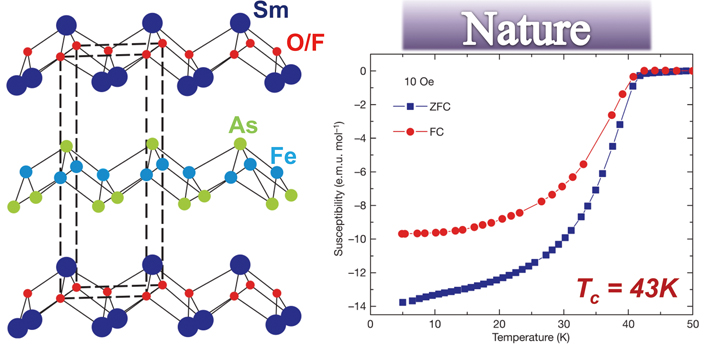1987: First Breakthroughs
In 1911, Dutch physicist Heike Kamerlingh Onnes found that some certain materials could become a “perfect conductor” in the presence of extremely low temperatures: the electrical resistance disappeared, and meanwhile the magnetic flux fields got totally expelled from the interior of the material. Such a phenomenon was later named superconductivity, and such materials termed superconductors.
Unlike ordinary conductors in which the electrical resistance goes gradually lower with the decrease of temperature, in superconductors the resistance abruptly vanishes at a critical temperature (Tc), and transits to the superconductivity state. Materials that could turn to superconductivity at certain transition temperatures higher than the McMillan Limit (generally agreed to be ~39 K, or ?234°C) – the upper threshold for possible transition temperatures predicted by a traditional superconductivity theory – are defined as high-temperature superconductors. The search for such materials, particularly those with critical temperatures higher than 77 K, the boiling temperature of the coolant liquid nitrogen, have been an important goal pursued by the physical community.
The year 1987 witnessed the first breakthrough made by CAS physicists in this field – scientists at the Institute of Physics (IOP), CAS independently discovered a family of cuprate superconductors with transition temperatures below 77 K, reporting its composition as Ba-Y-Cu-O. This won the team the First Prize from the 1989 National S&T Awards for Natural Sciences.
2008: Iron-based Superconductors
Later, in 2008, groups at the University of Science and Technology of China (USTC) and IOP first overcame the McMillan Limit in the world. They successfully synthesized a series of novel iron-based superconducting materials, and identified superconductivity with a critical temperature (Tc) of 43 K (-230.15°C) in the samarium oxygen fluorine iron arsenide (Sm1-xOxFxFeAs) system; superconductivity with a critical temperature of 41 K in CeFeAsO1-xFx; and superconductivity with critical temperatures above 50 K in two families of superconductors (namely REFeAsO1-xFx and REFeAsO1-x, where RE represents rare earth elements). Particularly, the team once broke the world record of the highest critical temperature by successfully achieving superconductivity at a critical temperature as high as 55 K.

The USTC team successfully breaks McMillan Limit (~39 kelvin) of conventional superconductors in Sm1-xOxFxFeAs with Tc = 43K. ((Image by courtesy of USTC)
With their explorations in superconductivity mechanisms, the team also verified and established iron-based superconductors as unconventional superconductors out of their basic physical characteristics.

Schematic structure of the Fe-As or Fe-Se layer in an iron-based superconductor, as revealed by IOP scientists. (Image by courtesy of IOP)

Atomic structures of selected major types of iron-based superconducting systems, many of which were discovered by the IOP/USTC team. (Image by courtesy of IOP)
Due to their contributions to research in this field, the joint team won the First Prize from the 2013 National S&T Awards for Natural Sciences, filling a three-year-long vacancy during which no recipient was deemed to be worthy of this prestigious prize.

